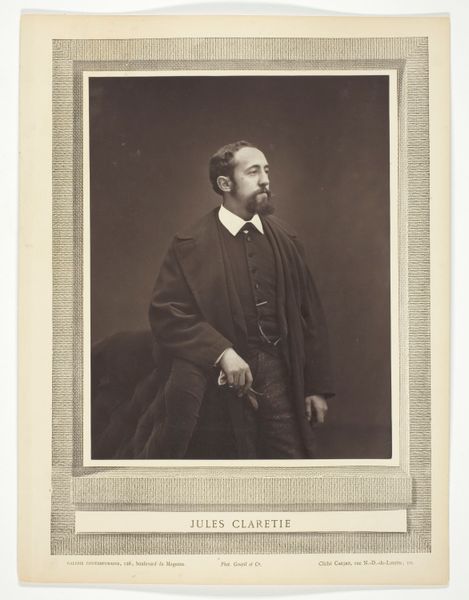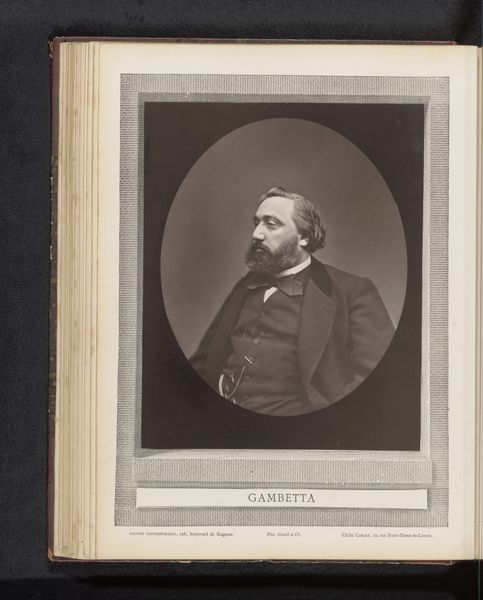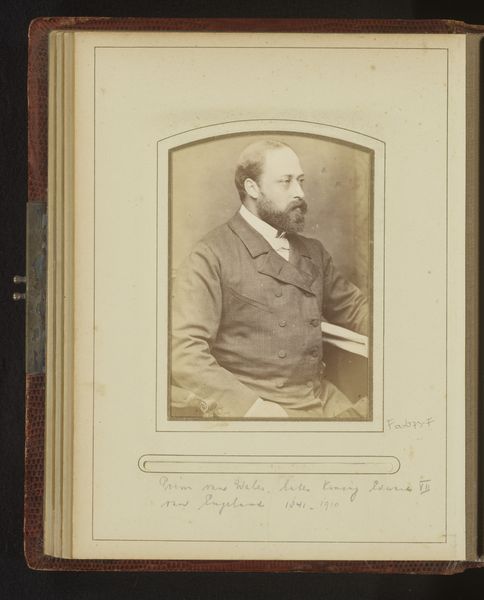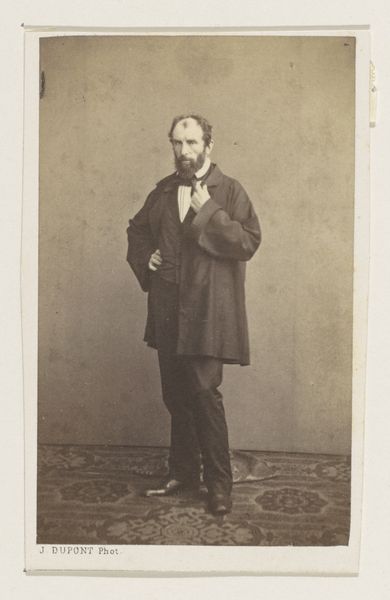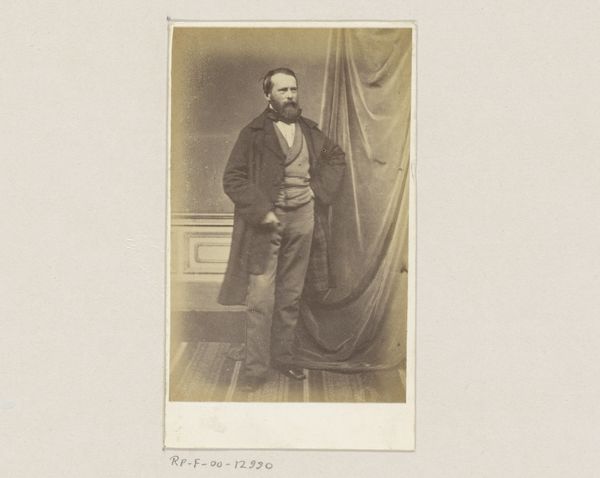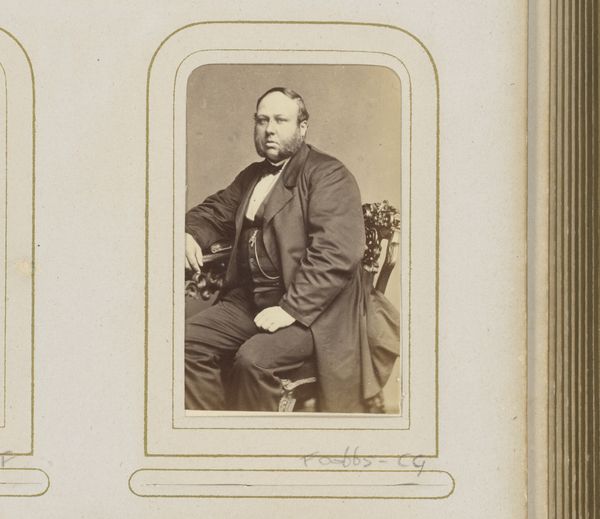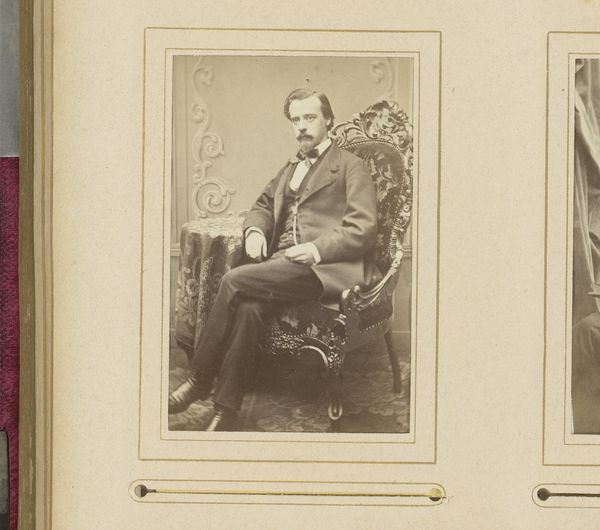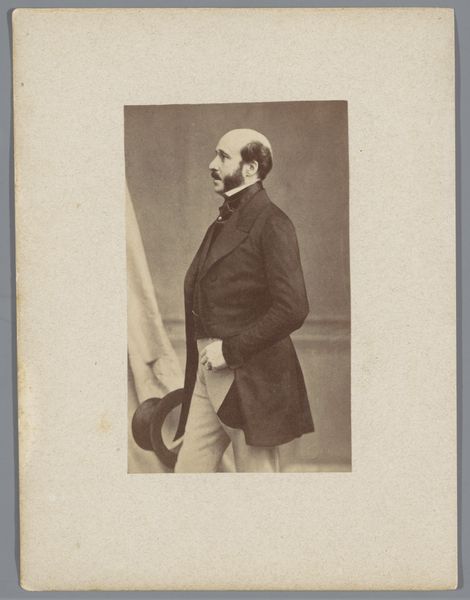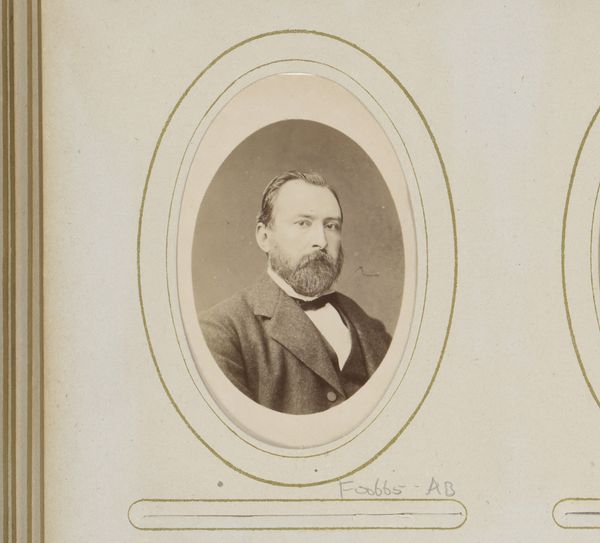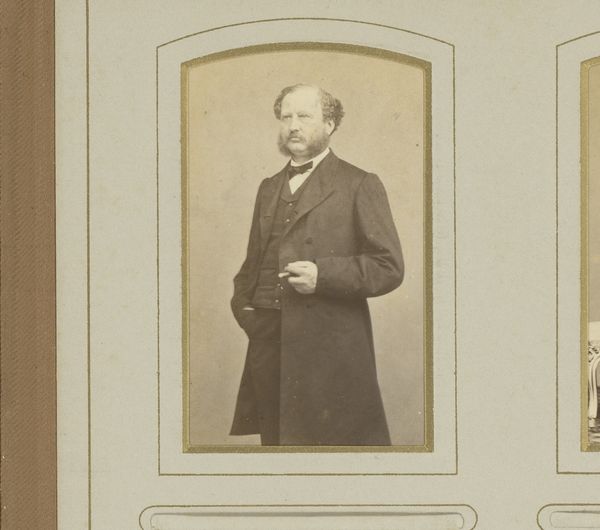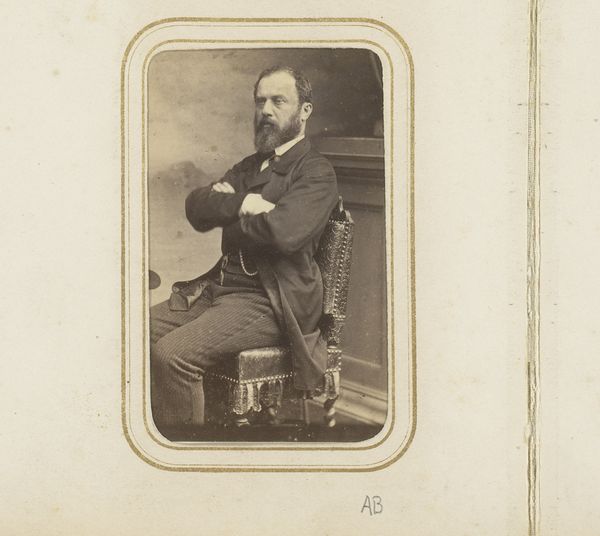
photography
#
portrait
#
photography
#
coloured pencil
Dimensions: height 229 mm, width 180 mm
Copyright: Rijks Museum: Open Domain
Curator: Welcome. We are looking at Etienne Carjat's photographic portrait of Jules Claretie, dating to before 1876. It is currently held here at the Rijksmuseum. My first thought is of subdued elegance. The tonal range, the posture—it suggests a poised intellect. Editor: Elegant, certainly. But perhaps also constrained? Claretie’s turned gaze and tightly clasped hand suggest a certain guardedness. I wonder, how might his status as a man of letters within the rigid social structures of 19th century France shaped this presentation? Curator: It’s tempting to read it through a biographical lens, but I find the photograph successful for its formal qualities. The careful composition, the play of light and shadow on his face. It possesses a striking presence merely as image. The framing of his figure, his almost sculptural command of light and form–it resonates formally with academic portraiture, but also with a striking modern quality, if one understands the careful gradations and tonal modelling. Editor: And yet, by deliberately crafting this image, isn't Carjat actively shaping a specific narrative around Claretie? This isn’t just about capturing a likeness; it’s about constructing an identity that resonates with certain established ideas of masculinity and professional standing at that time. The almost performative gravitas in his posture is deliberate, and perhaps points to how access to that sphere required a strategic deployment of symbolism. Curator: The stark, uncluttered background serves to amplify the impact of the subject’s dress. It is important. Each formal choice–the frock coat, high collar, the delicate watch chain–becomes signifiers that reinforce authority and intelligence. To see through an object, we have to recognize these elements as constituent of their cultural position. Editor: Yes, exactly! The details of his attire certainly work within an elite system of sartorial messaging that served as both declaration and an exercise of power. Even something as minor as the specific cut of his coat whispers of access and cultural capital. But to what end does that communication work? How complicit is a carefully staged photograph in perpetuating power hierarchies? Curator: Such close examination into material specificity enriches the discourse around photographs such as these. To explore how its various components, working in tandem, grant the work not just surface appeal, but cultural capital. Editor: Precisely. Ultimately, our focus here must also take on issues of how, within the grand narrative of art history, even seemingly simple portrait photographs speak volumes about issues of power, privilege, and the carefully curated narratives of identity.
Comments
No comments
Be the first to comment and join the conversation on the ultimate creative platform.

